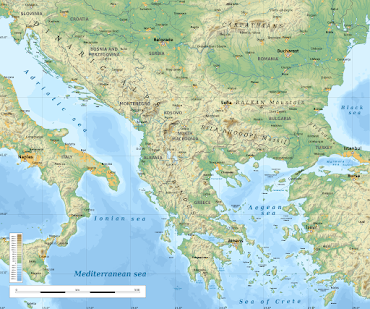The Balkan Peninsula
The Vinča culture is named for the Serbian site southeast of Belgrade, the capital of Serbia. The site was initially excavated by the Lithuanian archaeologist Marija Gimbutas.
There are hundreds of Vinča sites scattered around the Balkans. One of the largest sites was Vinča-Belo Brdo. It covered 72 acres (29 hectares) and had up to 2,500 people.
The Vinča culture occupied a region of Southeastern Europe corresponding mainly to modern-day Serbia and Kosovo, but parts of Southernmost Hungary, Western-Central Romania, Western Bulgaria, Eastern Croatia, Eastern Bosnia, Northern Montenegro and North Macedonia.
The oldest scribed symbols found in Central Europe have been found on Neolithic artifacts (7th to 5th millennia BC) of the Vinča culture. Scholars believe that the Vinča signs represent the earliest form of writing, predating ancient Egyptian and Sumerian writing by thousands of years.
What is known of these signs is limited since all the inscriptions are short and found on burial objects. Ritual burial accompanied by written signs among these Neolithic peoples suggests a priest-scribe caste.
According to an analysis by Shan Winn in 1973 and 1981, there are 210 signs. of that number, 30 are "core signs", with the remainder being variants and combinations.
Here are some of the Vinča signs:
Here are some of the Vinča signs:
Vinča artifacts include these figurines. Figurines such as these were most commonly buried under houses.
Perhaps the oldest known Vinča figurine (c. 6000 B.C.)
c. 5000 B.C.
c. 3000 B.C.
Related reading: A Vinča Culture Enclosed and Fortified Settlement in the Balkans; The Arrangement of Vinča Culture Figurines; Mask from Belo Brdo by Goran Pavlovic







No comments:
Post a Comment